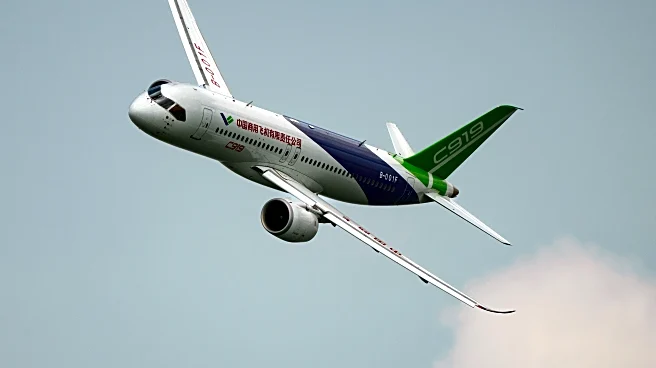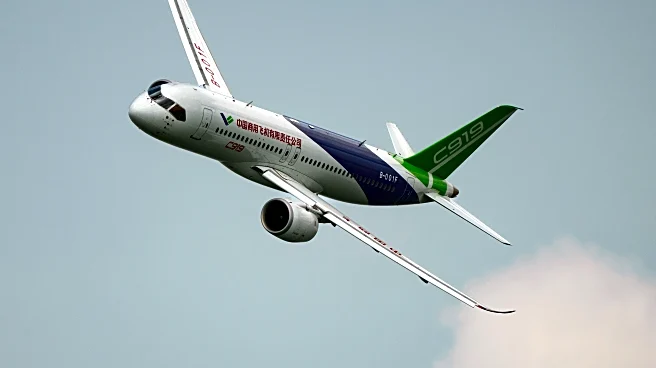What's Happening?
Airbus has announced a delay in the assembly of its A220 jets, affecting production schedules for this year and the next. According to industry sources, the company may only reach its target of producing 14 A220 jets per month by the end of 2026. This
delay is part of a broader set of challenges faced by Airbus, which is working to meet its production goals amid supply chain disruptions and other operational hurdles. The A220 is a key component of Airbus's strategy to capture a larger share of the small jet market, and any delays could impact its competitive positioning.
Why It's Important?
The delay in Airbus's A220 production is significant for several reasons. Firstly, it affects the company's ability to meet its delivery commitments, which could have financial implications and affect customer relationships. Secondly, the A220 is crucial for Airbus's market strategy, particularly in the competitive small jet segment. Delays could allow competitors to gain ground. Additionally, the production issues highlight ongoing supply chain challenges in the aerospace industry, which have been exacerbated by global economic conditions. This situation underscores the broader vulnerabilities in manufacturing and logistics that many industries are currently facing.
What's Next?
Airbus will likely focus on resolving the production delays to meet its 2026 targets. The company may need to adjust its supply chain strategies or invest in additional resources to accelerate assembly processes. Stakeholders, including investors and customers, will be closely monitoring Airbus's progress and any further announcements regarding production timelines. The aerospace industry as a whole will be watching how Airbus navigates these challenges, as it could set precedents for handling similar issues in the future.
Beyond the Headlines
The delay in A220 production could have long-term implications for Airbus's market share and reputation. It may also influence the company's strategic decisions regarding future aircraft development and production planning. Additionally, this situation could prompt discussions about the resilience of global supply chains and the need for more robust contingency planning in the aerospace sector.















